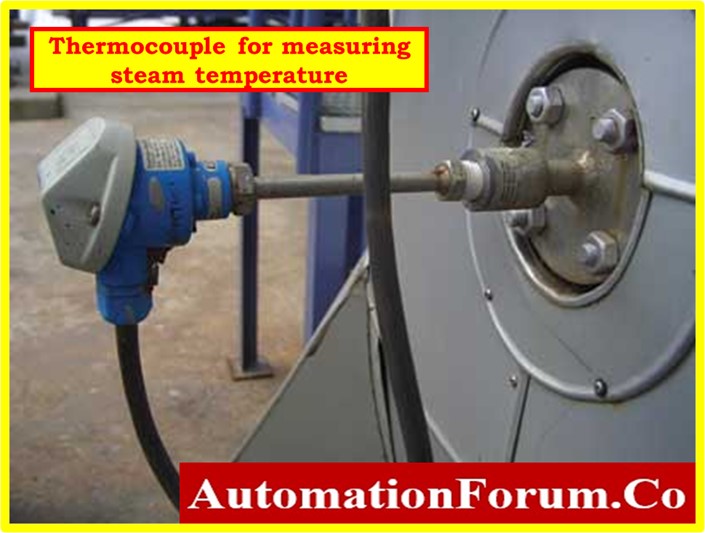- Understanding the Interaction of Sensors and Transducers in Process Instrumentation
- Examples and Differences
- Defining Sensors and Transducers
- All sensors are transducers
- Not all transducers are sensors
- Multifunctional Transducers
- Importance of Context
- Role of Integrated Systems
- Embracing Automation and Advancements
- Results
Understanding the Interaction of Sensors and Transducers in Process Instrumentation

Examples and Differences
- The interaction of sensors and transducers in the field of process instrumentation is crucial for efficient monitoring, control, and optimization of industrial processes.
- Although these terms are frequently used synonymously, a deeper examination reveals a complex relationship: all sensors are transducers, but not all transducers have sensor-like capabilities.
- Using examples from process instrumentation, we will explore the specifics of this relationship and highlight the importance of their differences in this discussion.
Defining Sensors and Transducers
Sensors
- A sensor is a device made to identify specific environmental characteristics or alterations and transform them into measurable signals, frequently in the form of electrical outputs.
- In sectors like manufacturing, chemical processing, and environmental monitoring, sensors give crucial data that support decision-making.
Transducers
- The term “transducer” refers to a broad category of devices used to change one form of energy into another.
- Multiple energy domains, including electrical, mechanical, thermal, and optical, can be converted.
- The manipulation of energy in a variety of industrial processes is fundamentally aided by transducers.
All sensors are transducers
When considering how sensors automatically act as transducers, the connection between sensors and transducers becomes clear.
Example: Oil refinery pressure sensor

- Consider a pressure sensor placed inside the distillation column of an oil refinery. This sensor keeps track of the column’s pressure level, a significant factor that affects the refining procedure.
- The sensor’s diaphragm deforms mechanically in reaction to applied force when there are changes in pressure inside the column.
- This deformation causes changes in the sensor’s electrical characteristics, such as resistance or capacitance. These electrical changes can be measured and serve as a good indicator of pressure changes.
- In this particular instance, the pressure sensor performs the functions of both a sensor (by determining the level of pressure) and a transducer (by transforming the mechanical strain into an electric signal).
Not all transducers are sensors
However, not all transducers have a sensing function, even if sensors comprise the function of transducers. Some transducers only convert energy instead of detecting physical qualities.
Motorized valve actuator, as an illustration

- A motorized valve actuator controls the flow of chemicals through a pipeline in a chemical processing plant.
- Electrical energy is converted into mechanical motion by the actuator, which then regulates the position of the valve to control the flow rate.
- The motorized valve actuator is not a sensor, although playing a crucial part in process management.
- It manipulates processes by converting electrical energy into mechanical motion rather than measuring a physical property.
Multifunctional Transducers
In process instrumentation, certain transducers are multifunctional, performing both sensing and actuation functions.
An illustration is the thermocouple used for power generation for temperature measurement

- A thermocouple is a versatile transducer used to monitor temperature by utilizing the Seebeck effect, in which a voltage is produced as a result of temperature variations between its junctions.
- The thermocouple acts as a sensor, detecting temperature changes and generating an electrical voltage proportionate to the temperature difference.
- Interestingly, thermocouples can function as energy transducers. The thermocouple’s dual functioning is demonstrated by the voltage differential that is produced when it is subjected to temperature variations across its connections.
Importance of Context
Choosing between sensors and transducers depends on the context of the application
Process optimization
- Sensors are essential for gathering precise data to make sure that processes are efficient and that goods are up to standards of quality.
Energy Conversion
- Transducers, on the other hand, enable the energy conversion that is necessary for process control. For example, to modulate process variables, actuators convert electrical information into mechanical motion.
Role of Integrated Systems
In modern process instrumentation, sensors and transducers frequently combine in integrated systems
Closed-Loop Control
- Control algorithms process real-time data that is provided by sensors. A closed-loop feedback system is then completed by transducers implementing control actions by actuating devices.
Precision and Efficiency
- This integrated strategy continuously modifies process variables based on sensor data, enhancing process precision, efficiency, and safety.
Embracing Automation and Advancements
The distinction between sensors and transducers has been reduced by the developing field of industrial automation.

Smart Sensors
- Technological advancements in the sensor industry have produced smart sensors with integrated signal processing capabilities, further integrating their functions with the capabilities of transducers.
Sensory Transducers
- Transducers with sensing capabilities are considered sensory transducers since they reduce the distinction between the two categories.
Results
- The interaction between sensors and transducers in the dynamic world of process instrumentation is a complicated interplay of energy conversion and data capture.
- While all sensors are fundamentally transducers, not all transducers play the role of sensors.
- This distinction is critical for understanding their numerous uses, enabling precise process control, and encouraging innovation in global industrial sectors.
- Understanding this complex link enables engineers and experts to properly utilize these technologies, thereby improving the efficiency, safety, and sustainability of industrial processes.





